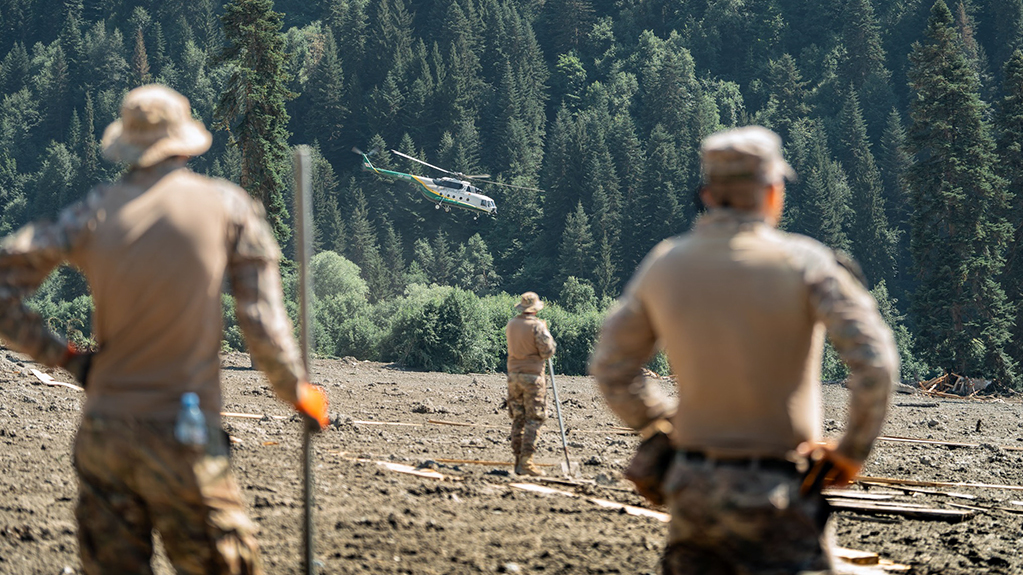“Cataclysmic events that naturally progress depending on various circumstances yes, do happen everywhere, but they are necessarily preceded by a chain of events that triggers the process, and having the right information at the right time helps us mitigate the losses, so that the natural process does not turn into a natural disaster. The probability that the natural process in Shovi would not turn into a natural disaster, in case of proper functioning of state bodies, people, and media, was 80%,” says Nika Tsitelashvili, a hydrologist.
News
Trending stories
- 1 BBC investigation: WWI–Era Chemical Weapons Used to Disperse Tbilisi Protests
- 2 Starting in 2026, First-Year Students at Private Universities Will No Longer Receive State Grants
- 3 NGOs Demand Answers on Which Chemical Substances MIA Used Against Protesters
- 4 Kobakhidze and Putin Attend International Forum on Neutrality in Turkmenistan
- 5 Zurabishvili Appeals to International Organisations to Investigate Possible Use of “Camite”
- 6 The Strasbourg Court Has Begun the Substantive Hearing of Gela Mtivlishvili's Case
Nika is an assistant professor of civil engineering at Ilia State University. In 2015-2016 he worked at the National Environmental Agency, and in 2016-2018 he continued his work at the American Investment Fund. Since 2019, he has been actively involved in research/consulting activities. He is currently working on his doctoral research in collaboration with San Diego State University.
Nika casts doubts on the conclusions given in the initial assessment of the Shovi disaster published yesterday by the National Environmental Agency. The agency purported that the catastrophic geological and hydrometeorological events in the Bubistskali River valley on August 3 were caused by the intensive melting of the glacier, rockslide at the base of the mountain, atmospheric precipitation, landslide-erosive processes, and the passage of mudflow, which are related solely to natural factors. According to the report, from the point of conception and activation, the torrent should have reached the area of the cottages in about 8-10 minutes based on preliminary projections. The same was echoed today by the Ministry of Environmental Protection and Agriculture – “Even if early warning systems were installed, everything happened so quickly, we could not have avoided this tragedy.” The minister denied the claim of a two-day build-up of water (waterlogging) in the Buba valley.
Hydrologist Nika Tsitelashvili considers the part of the report, that states that the chain of events unfolded blisteringly fast, the ice broke off and 5 million m3 of earth dislodged, incorrect. “At least 1 million m3 of water in a liquid state is needed to displace such mass (that’s in case of structural flood, but the footage suggests it was turbulent, which would have required 2 million m3). Where this water came from, the report doesn’t say.
For this water to accumulate in the origin in a span of an hour, 170 mm of water is required (a ridiculous figure. For comparison, if the National Environmental Agency is to be believed, 35 mm of atmospheric precipitation fell in the Vere Valley in one hour). The previous day, if we rely on the data published by the said agency, only 10 mm of rain fell in Shovi, and August 3 itself was sunny. Therefore, rain cannot be the instigator of these processes. We have to assume that in the previous days, water has been accumulating in the glacier or in the surrounding area (it depends on the intensity of melting, but the accumulation of 1 million m3 of water, considering the hydrological parameters of the region, would take at least a week). Consequently, the first line of defense of early warning failed. It is evident that no one checked anything on site, and if they did check but did nothing, then we are dealing with indifference,” Nika Tsitelashvili publishes satellite images of Buba Valley from 2005, 2018, and 2020.
Satellite images from 2005 show that the valley was more or less stable, and the floodplain was filled with trees.

Images from 2018 already clearly show a trace of mudflow passage.

A worsening trend can be discerned in the 2020 images as well.

“Where did the claim by the National Environmental Agency, as if Dghviora River, not Buba, posed a threat to Shovi, come from? They also mentioned that apparently, communists redirected the river channel, and today, the river simply reclaimed its original route.
What could have been done when the state started the redevelopment of Shovi? First of all, the flooding of rivers Buba and Chanchakhi should have been modeled for different probabilities (for 5, 10, 50, and 100-year recurrence, and if a high risk was established during the study of the drainage basin, the water expenditure of 200 and 500 years of recurrence should have been extrapolated) and nothing meant to be used for human habitation or mass gathering should have been constructed in the risk zone. This is also prediction and prevention!
In addition, they are insisting that the water level in the Chanchakhi River did not rise with the intense melting of the glacier, despite the fact that Buba River is a tributary of Chanchakhi. Does the Ministry of Environmental Protection know what the prevalence of Buba’s water is in the Chanchakhi River, 10%, 20%, or maybe 50%?
According to them, despite the rising temperature and intensive melting of glaciers, for some reason, the water level in the Chanchakhi River has dropped sharply compared to the first half of the month (there is a slight increase during the rain, but the trend is declining).
The water level especially decreased in the last week and reached its lowest point on July 31. The question is, if the temperature was rising and the glaciers were intensively melting, why was the water level dropping during the last two weeks?
Did the river crossing wash out of the level gauge alignment? Was this the reason for the water level drop? If everything was in order, why did the water level decrease from July 31 onwards during the intense melting of glaciers? Also, it is interesting why the water expenditure almost doubled when the curve should have leveled off. Two assumptions can be made here. One is that the profile of the river in the calibrator of the water level gauge was sanded and needs to be readjusted, and the other is that the water of the Buba River already pours into the Chanchakhi River unrestricted, which compensated for the drop and restored water level back to normal for this season.”
Nika believes that if the early warning system worked properly, it would have been perfectly possible to move people to a safe place within 10 minutes, given that the relevant agencies predesignated safe areas, for which the modeling of the flood should have been done at the initial stages of the development of the resort.
Nika points out several reasons of why the natural process of Shovi turned into a natural disaster and stresses that the responsibility for what happened rests squarely on the government and its representatives.
- Indifference to and improper performance of official duties by state agencies, caused by a lack of principle and disregard for their responsibility (profession) to the nation.
- Inefficacy of the legal framework, caused by the fact that the law(s) are written around narrow corrupt interests and not the needs of the country and society.
- Virtually non-existent database, which could be used to prevent fatal consequences of similar cataclysmic events; absence of principled and free-willed qualified personnel, research in this direction, and relevant education in universities.
- Inadequate post-facto response, especially when minutes decide fates, not hours or days.















